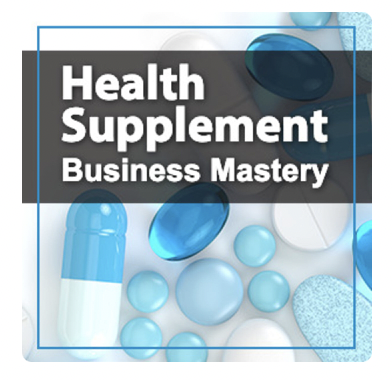Where are the top health supplement marketers getting their traffic in 2022? And where will they shift traffic to in the next 2 – 3 years?
To answer that we first need to look at what’s changed in e-commerce because of the pandemic.
The biggest change was more volume.
Volume in both buyers and sellers.
From 2019 to 2020 the global share of e-commerce in retail sales jumped by nearly 4.5% in one year.
To put that into perspective, the historic pace of growth for global e-commerce sales is roughly only 1% per year.
So here’s what’s happening… e-commerce business and big brands are pushing more into e-com selling and they are going to continue to market more online.
With the continued growth of online sales, there’s no slowing down.
We’re going to see a continued stead uptick year over year.
Yes the pandemic propelled the numbers by about 3 years and that created a new shelf.
But the pace of growth for global e-commerce sales will continue at the historic rate of 1% each year from here on out. Not at the new found lift. So we saw a spike to a new level or a new shelf and now we’ll continue to see growth at a steady pace.
We’ll probably see a little slip off as new brands leave the marketplace unable to keep up.
But overall the competition for ad dollars is going to increase.
Big brands are still getting traction with Google, Facebook, email, affiliate, native ads, and more.
They always will because they have the budgets and the backend to own the channels.
More competition in e-commerce in general has a few ramifications.
First, higher costs for digital advertising.
Facebook CPMs increased almost 50% in one year.
What does that mean in terms of dollars?
Well, according to Statista, the cost per 1000 impressions (CPM) on social media advertising grew from an average of $4.51 USD in Q2 2020 to $6.37 USD in Q2 2021
Think of this as a force that’s pushing up on ad cost.
While at the same time on social platforms like Facebook Traffic, that is the number of people getting to your page is being pushed down – due to compliance restrictions for supplement brands.
What you can and can’t say on Facebook is different than FDA compliance.
Facebook wants to push direct to consumer (DTC) supplement brands out and replace them with bigger brand marketing advertisers.
Meanwhile, the conversion force is being push down.
For DTC supplement brands the conversion force has been suppressed by Facebook for years as they restrict how you sell supplements.
Again they want brand advertisers on their platform to keep a clean image.
On top of that, I’ve seen a steady increase in mobile shopping for the last 8 years. And I’ve seen a lift in mobile visitors due to the pandemic.
And mobile is another force that’s pushing conversion down, as desktop typically converts better. (globally, the conversion rate for desktop is 2.59% compared to 1.86% on mobile.)
Mobile conversion rate optimization / particularly the checkout experience has been a priority of e-commerce websites for several years now.
If you don’t have it dialed in in 2022, you need to make this a top priority for your business.
Shopify and Click Funnels do not have the best checkout experience for conversion.
Yes it’s a clean user experience (UX) but this is another area where people buy supplements differently and the out of the box carts on these platforms are not optimized for that. They are just optimized for UX.
So we have a mix of a few things coming together here…
Ad dollars are not going as far any more.
There’s rising demand for paid ads due to more competition not just with other supplement companies but all ecommerce’s demand for traffic.
The rising demand creates rising paid ad costs as demand grows faster than supply. Driven up further as larger online businesses put more budget into digital ads.
Meanwhile, privacy changes have removed the ability to get granular with ad tracking.
There’s approximately a 20% variance now between reporting and what Facebook says.
Although Google Smart Goals is a great workaround.
But in the end brands will have to make it up with higher budgets.
Or moving to other ad platforms, which is a trend that’s happening in the market now.
But higher ad costs will be on those platforms as well.
Resulting in higher ad spend for 2022.
On the other side of the business there are rising costs.
Increasing shipping costs for one, are coming for 2022.
And inflation is at 7% while some predict it to reach 10% for the next 10 years, this is going to increase cost of goods.
So profit margin is getting squeezed.
The rising costs will drive a lot of the supplement companies out of business that don’t have their conversions and average order value (AOV) dialed in.
A lot of supplement brands will simply be priced out of the market in 2022 and 2023 as the market rebalances.
The bigger supplement companies that have a higher LTV will take less margin today for more of a bigger share tomorrow.
Before that happens though there will be diversification into other traffic channels for a better ROI mix (typically for 7 figure supplement businesses are using at least 3 channels or more.
For sub 7 figure supplement brands, I recommend focusing on one.
How can supplement companies grow in all this turmoil?
I predict there will be a shift toward other digital marketing platforms in 2022, specifically…
Email.
Youtube.
and Google shopping.
You’ll notice social ads are not on my list.
It’s difficult to cut out social ads all together because they own such a large share of the market and eyeballs.
Let’s look at email first
The bad news is that the privacy trend is extending toward email.
I think it hasn’t really hit yet. GDPR was only the start.
Privacy restrictions in the email channel will result in a shift on that channel in 2022.
As a result, email will become more relationship oriented rather than transactional.
The need for more value added and trust building emails, changing the way supplement brands approach this channel.
Really getting granular on the customers who want your emails and treating them differently.
This may mean sending less emails or more relevant ones for some.
Segmenting your list is going to become even more important than before. As well as pruning unengaged subscribers while making a bigger effort to re-engage those that are less responsive.
There’s one channel that I think is going to explode as a result but I’m reserving that info for my paid supplement clients.
The YouTube Ad Channel
YouTube has been the wild west for a long time.
Advertisers, especially direct response supplement advertisers have been getting away with a ton on this channel.
It’s a great alternative to Facebook ads.
My prediction is more ad dollars from supplement brands are going to shift here for as long as it’s still good. I think we have a good runway here by a few years actually.
The Google Shopping Ad Channel
Since 2019 alone, Google Shopping ad spend has increased by 38%.
Visitors from Google Shopping land on your page with a very high intent to buy.
So for eCommerce businesses in particular, Shopping ads work far better than normal text PPC ads.
The down side is that Google Shopping is really just a price comparison engine.
So much like Amazon it’s a race to the bottom for mid to lower funnel level advertisers.
It should absolutely be a part of the ad channel traffic mix though. Especially now before it gets really saturated.
This channel is also going to change how supplements are sold. Shifting to a more hybrid e-commerce / direct response strategy vs. a pure commerce play.
I’m already moving my supplement clients in this direction and they are seeing success.
Let’s also look at Affiliates as a traffic channel to possibly double down on in 2022
The biggest direct response supplement brands have always used affiliates as one of their top traffic channels.
Typically 30% of a DTC supplement companies revenue comes from this channel.
It’s a good channel to balance out the rising ad costs we’re seeing and will continue to see for probably the next few years.
The pay for performance model is very attractive, but it’s not an easy channel to jump into cold.
And there’s a lot more to it than just paying for performance.
It’s still a paid channel like any other and it’s not as easy as a Google or Facebook ads platform.
You may need to pre-pay to get your offer sent by an affiliate, or even pay a make-good if they send your offer and there are no sales.
And you’ll need to do a ton of testing and optimizing before your offer is ready for an affiliate.
Success with affiliates comes down to an already strong converting offer with cold traffic and who you know.
The best affiliate deals are made one-on-one, so it can be a slow channel to start with.
Promoting other peoples offers can go a long way to establishing a relationship at least to start with smaller affiliates, that is, if they also have an offer of their own to promote.
Top-tier affiliates have too many proven offers to accept a new unknown, so it’s hard to break in.
You have to first build relationships through smaller affiliates and work your way up the ranks.
But once you have the affiliate flywheel going, it can be a great source of additional buyers without having to deal with a lot of the mess that comes with the big traffic sources.
But it’s not free of mess either.
You have to provide email swipes, ad creative, tracking links and other resources, making it as easy as possible for affiliates to promote your offer.
Okay let’s recap…
All of the big traffic channels, Facebook, Google, YouTube, have all matured to the point of saturation. The big non supplement corporate brand advertisers have flooded those platforms, rising the ad prices and demand for ad inventory.
The shift toward greater privacy will only continue causing more attribution problems.
It might even lean back towards less direct response marketing and more brand marketing.
But that’s only a luxury that the big brands can afford.
Not the small to mid cap supplement companies.
For supplement brands like that I can see relationship driven marketing taking center stage over time, through channels like email and maybe even live-selling on whatnot and Facebook and other platforms for smaller supplement brands.
Discover the 3 funnels that can help your health supplement business succeed.

Listen to the Health Supplement Business Mastery Podcast for for dietary supplement entrepreneurs and marketers.



